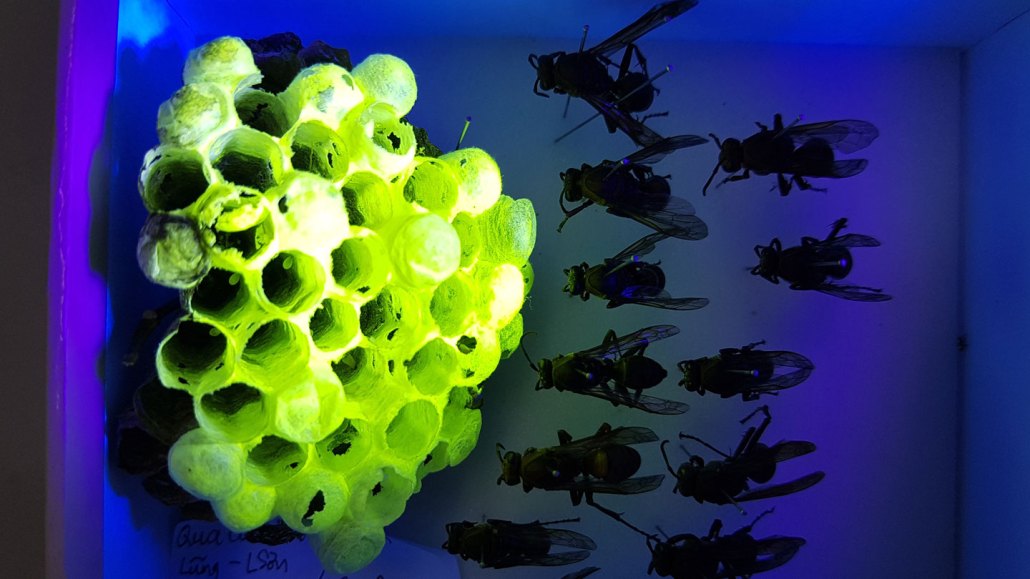
The nests of some Asian paper wasps fluoresce when exposed to ultraviolet light, a new study finds.
Bernd Schöllhorn, Serge Berthier, Lien Thi Phuong Nguyen

The nests of some Asian paper wasps fluoresce when exposed to ultraviolet light, a new study finds.
Bernd Schöllhorn, Serge Berthier, Lien Thi Phuong Nguyen